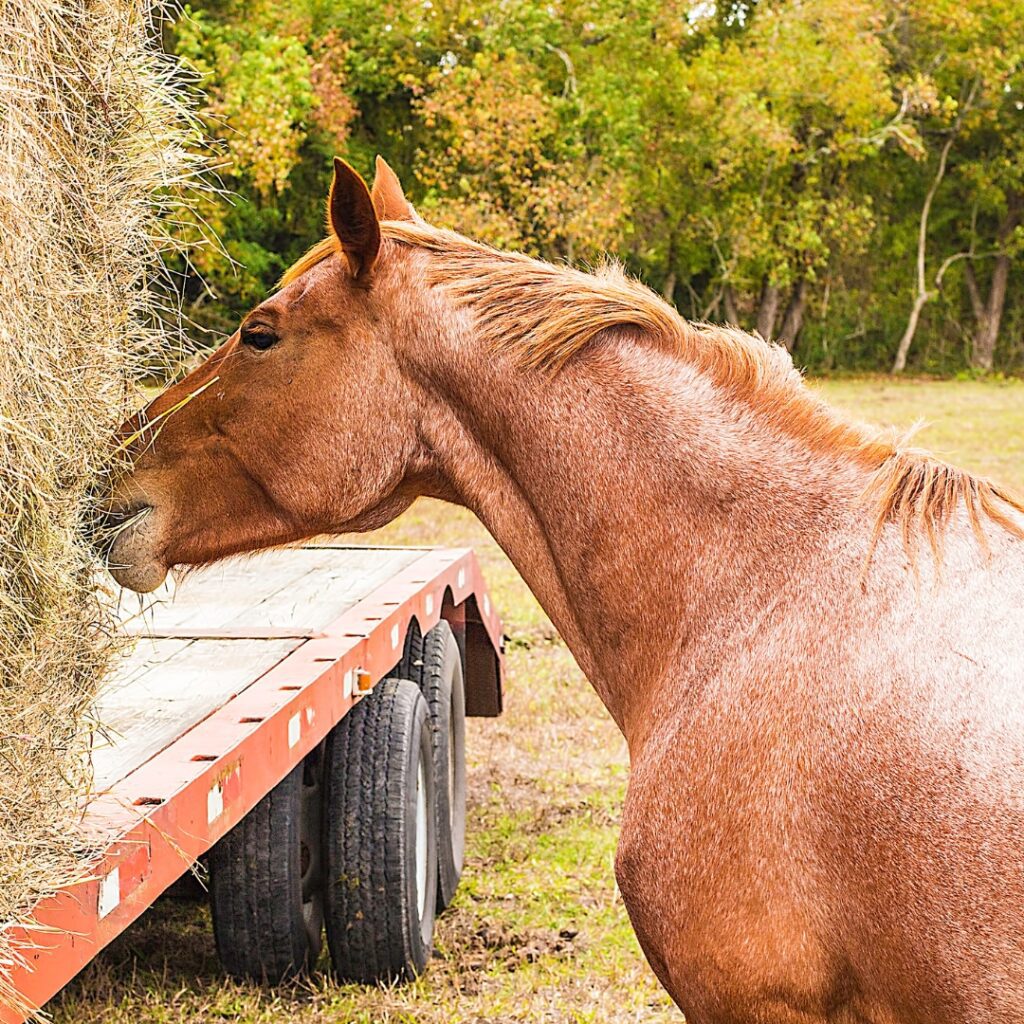
This season has been a tough one for metabolic horses. In my practice, I have had an influx of new clients with laminitic horses and ponies. Through my own hay sampling and chatting with other nutritionists it is consensus that this year has had on average higher sugar content in the forage.
Sugar content in forage depends on a variety of factors such as the maturity when harvested, the species of grasses/legumes, the time of day the forage was cut, the time it spends drying, whether or not it was rained on etc. When we end up with forage that is higher in sugar content than we want it to be it can be tough to narrow down the reasons. In addition to this, hay is a difficult crop to harvest as it is extremely weather dependent. Therefore, oftentimes we can end up with a hay batch that is not optimal. So, when we are dealing with obese horses, those diagnosed with metabolic disorders or just generally at-risk horses we sometimes must make alterations to the forage to make it acceptable for our horses.
One of the most popular methods used for these situations is soaking the hay. This is often done to reduce the sugar content of the forage. When evaluating this, I prefer to use the non-structural carbohydrate (NSC) content. This is a calculated value that includes both the water-soluble carbohydrates (WSC) and starch. I understand that it is unknown whether fructans should be included in the calculation but based on the NRC, 2007 and my recent conversation with Dr. Andy Durham I am continuing to include fructans in the NSC calculation through the use of WSC to exercise caution.
Recommending times for hay soaking can be quite challenging and often is just an educated guess as when you look at the research there are large discrepancies. Some studies tell us that soaking hay for 12-16 hours causes significant decreases in sugar content, while other studies tell us that this can be achieved after 30 minutes of soaking. To highlight this variation – studies have reported NSC losses of 12-45% after 60 minutes of soaking and 30-48% after 12 hours of soaking.
Now, for reducing NSC content in the acute stages of laminitis soaking the forage tends to be a really good option. But there are drawbacks to the practice as well such as the leaching of other important nutrients and additional bacterial growth. Additionally, there is no guarantee that soaking hay brings the NSC content down to a safe level for your horse.
I love getting into the science and tracking the data; when my clients love science just as much as I do, it is a lot of fun! The data we are going to focus on in this article is from a new client that reached out as her horse developed laminitis. She was already soaking the hay when I went to see her horse and had started a great emergency protocol for laminitis. I tested the hay and made sure the diet was balanced. As we chatted more and continued with diet adjustments, we decided it would be fun to collect more data.
So, with the 2022 forage batch that this horse was consuming the owner soaked the hay for the usual time (about 9 hours) and then I tested both the soaked hay and the non-soaked hay. The samples were taken from the same bale of hay and collected using the same method. With all the variation in the published literature, the gold standard is to test the soaked hay and see how much of a difference the soaking was making! Let’s dive into the results!
In the chart below you will see direct comparisons for a variety of tested parameters in the forage. These numbers are on a dry matter basis to make it easier to compare without the large moisture differences. As you can see from the chart below, there was a significant difference made in the sugar content of the forage.

The graph clearly illustrates the significant difference in sugar content after the hay was submerged in cold water for 9 hours.

To conclude, despite soaking hay being a popular practice, we don’t have clear guidelines. Therefore, using hay sampling to gather the data for your individual hay can be an extremely valuable tool. As a nutritionist, I love when clients are keen to go for extra data as it means that we have so much less missing information and can get extremely accurate in nutritional calculations! If you’re looking to get your hay analyzed and a personalized nutrition program for your horse, contact me here.
References:
Longland, A. C., Barfoot, C., & Harris, P. A. (2011). Effects of soaking on the water‐soluble carbohydrate and crude protein content of hay. Veterinary Record, 168(23), 618-618.
Moore-Colyer, M. J. S., Lumbis, K., Longland, A., & Harris, P. (2014). The effect of five different wetting treatments on the nutrient content and microbial concentration in hay for horses. PLoS One, 9(11), e114079.
Müller, C. E., Nostell, K., & Bröjer, J. (2016). Methods for reduction of water soluble carbohydrate content in grass forages for horses. Livestock Science, 186, 46-52.